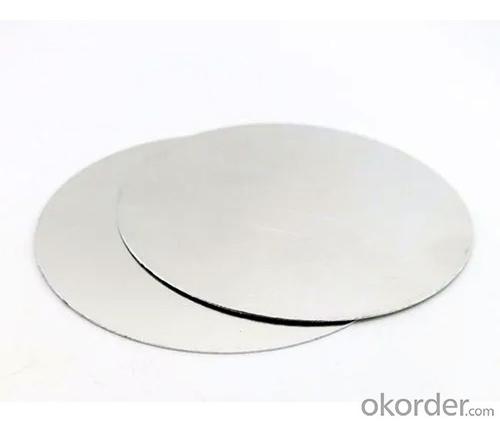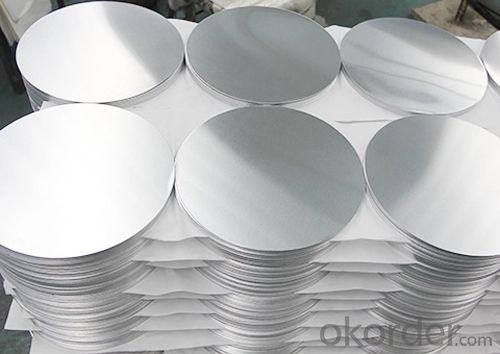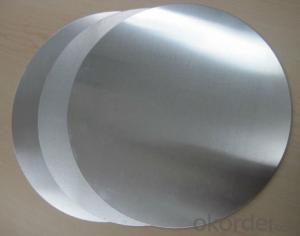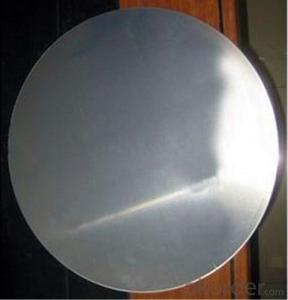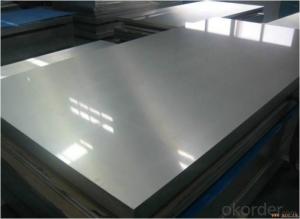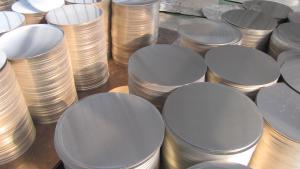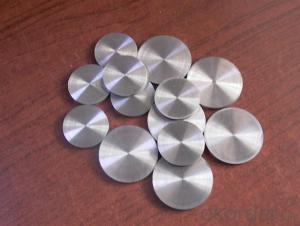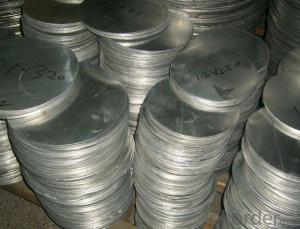Sheets of Diamond Plate Aluminum - Aluminum Discs for Cookware 1050 1060 3003 for Non-Stick Pans Wholesale
- Loading Port:
- QINGDAO
- Payment Terms:
- TT OR LC
- Min Order Qty:
- 1 T
- Supply Capability:
- 200 T/month
OKorder Service Pledge
OKorder Financial Service
You Might Also Like
Specification
The lightness and excellent thermal conductivity of aluminum alloy make it a high-quality material for making cookware, especially suitable for cooking environments that require rapid heating and uniform heat distribution, such as outdoor cooking or home use. Aluminum alloys such as 1050, 1060, and 3003 are usually used . It is an excellent choice for manufacturing cookware due to its thermal conductivity, lightweight durability, food safety, ease of processing and cost-effectiveness.

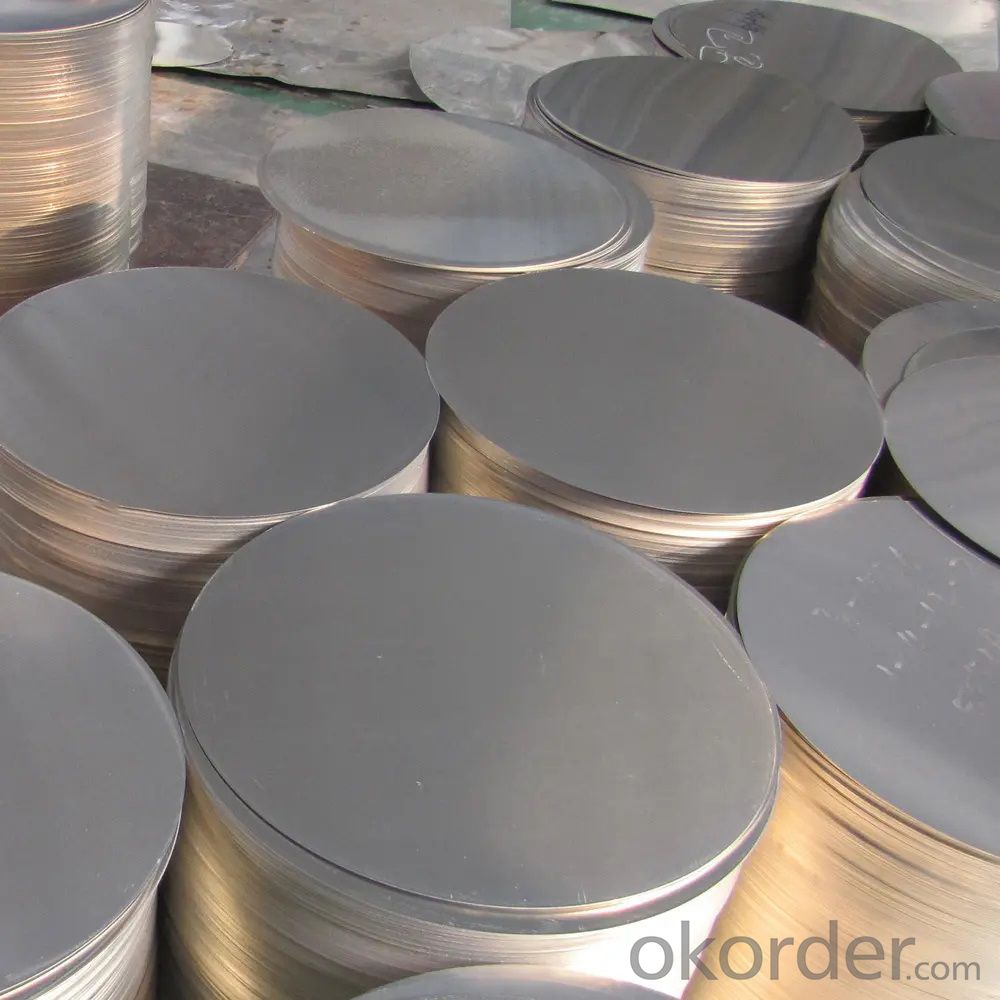
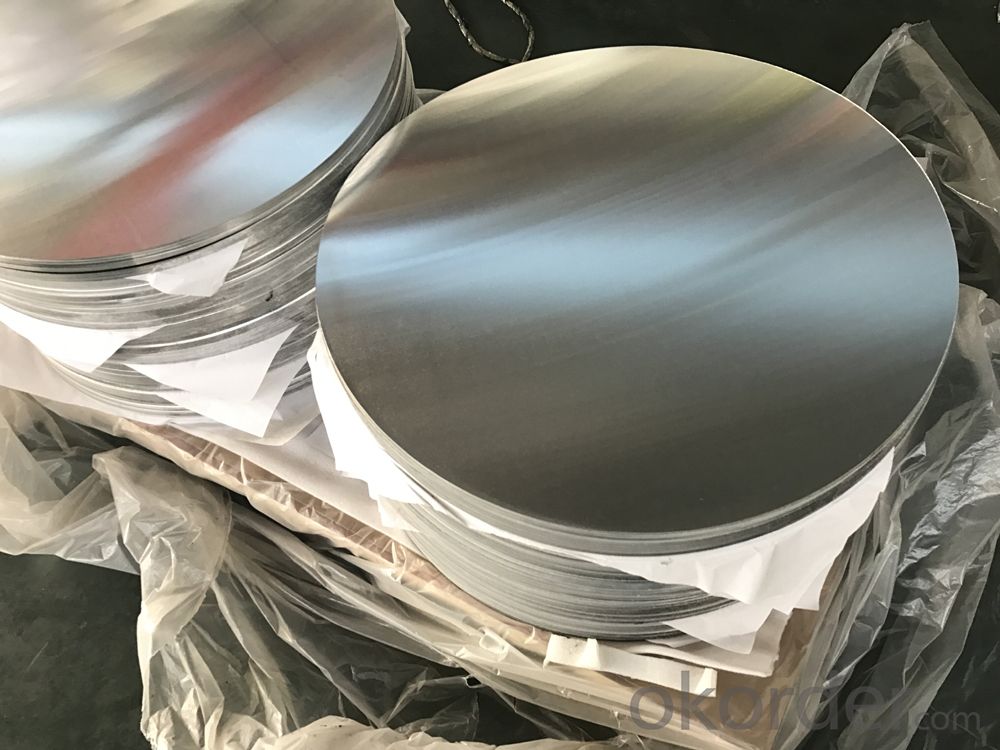
Specifications of aluminum discs for cookware:
| Alloy | 1050, 1060, 1070, 1100, 3003, 3004, 3105, 3A21, 5005, 5052, 5083, 5182, etc. |
| Temper | O, H12, H14, H18, H24, H32, etc. |
| Thickness | 0.2-10mm |
| Width | 50-1600mm |
| Process | hot rolling (DC) or cold rolling (CC) |
| Surface Treatment | Polished |
| Surface | Hairline, Oxidation, Mirror, Embossed, etc |
| Appearance | The surface is smooth and clean, without scratches, whole parts, oil stains or oxidation; the cutting edge has no burrs. Package seaworthy wooden pallet, wooden box, aluminum crate |
| Usage | Suitable for aluminum cookware, pots, pans, frying pans, rice cookers non-stick, pressure cooker soup pots, pizza trays, kettles, fryers, baking sheets, traffic signs, light reflectors, etc. |
Characteristics of aluminum discs for cookware:
1. High thermal conductivity: Aluminum can dissipate heat evenly and quickly. This ensures food cooks evenly and prevents burning or overheating.
2. Lightweight: Aluminum is lightweight compared to other metals used in cookware manufacturing, such as cast iron or stainless steel. This makes aluminum cookware easy to handle and operate, especially for tasks that require frequent stirring or turning.
3. Safety and hygiene: It is safe for food contact and will not release harmful substances into food during the cooking process, ensuring the safety of the final dish.
4. Corrosion resistance: Aluminum disc 1050 has good corrosion resistance, which is very important for cookware exposed to moisture, acid and other food ingredients. Proper care and maintenance can further extend its lifespan.
5. Excellent formability: Aluminum is highly formable, allowing manufacturers to shape it into a variety of cookware designs, including pots, pans and trays. This versatility enables the production of cookware in different sizes, shapes and functions to meet consumer demands.
6. Affordable: Aluminum is low-cost compared to other materials used in cookware production, and its relatively low cost makes it an attractive option for both manufacturers and consumers.
Looking forward to hearing from you!sales @ alummc.com
- Q: Are the aluminum sheets suitable for aerospace applications?
- Indeed, aluminum sheets prove to be a suitable choice for aerospace applications. The aerospace industry widely embraces aluminum due to its exceptional strength-to-weight ratio, resistance against corrosion, and high thermal conductivity. These remarkable attributes render aluminum an ideal material for fabricating aircraft structures, such as fuselages, wings, and structural components. Moreover, aluminum can be effortlessly machined and shaped into intricate forms, enabling the production of lightweight and streamlined structures. Additionally, aluminum sheets can be easily joined using various techniques, including welding and riveting, ensuring the integrity of aerospace components. All in all, aluminum sheets are highly compatible with aerospace applications and have been extensively employed in the industry for numerous years.
- Q: Are aluminum sheets available in different colors?
- Yes, aluminum sheets are available in different colors.
- Q: Hi everyone, I have this problem that I'm somewhat confused about. The problem is:An alloy of aluminum and magensium was treated with sodium hydroxide solution, in which only aluminum reacts to give hydrogen gas:2Al + 2NaOH + 6H20 --gt; 2NaAl(OH)4 + 3H2If a sample of alloy weighing 1.118 g gave 0.1068 g of hydrogen, what is the percentage aluminum in the alloy?How do I account for the magnesium and what stoichiometric relationships would I need to set-up? This is very confusing, but I appreciate the slightest of help on this!Thank you.
- You don't need to worry about the magnesium at all, because it doesn't enter into the reaction. You have a balanced equation for aluminium and hydrogen, and the data given are sufficient: From the equation, you know that 2 moles of aluminium produce 3 moles of H2. 0.1068 g of H2 were produced, so divide this by molecular mass of H2 (2.016) to determine the moles of H2 produced. You know that 3 moles of H2 would have been produced from 2 moles of Al. Therefore, multiply the moles of H2 by 2/3, to determine the moles of Al that were present. Now multiply this number by the atomic mass of Al, to determine the grams of Al. Now divide this number if grams by 1.118 and multiply by 100 to determine % Al present in the alloy.
- Q: What characteristics distinguish aluminum sheets from other types of sheets?
- <p>Aluminum sheets are lightweight, corrosion-resistant, and have excellent thermal and electrical conductivity. They are commonly used in construction, automotive, and packaging industries. In contrast, other types of sheets, such as steel sheets, are heavier and stronger but less resistant to corrosion. Plastic sheets are lightweight and flexible but have lower strength and thermal conductivity. Copper sheets offer high thermal and electrical conductivity but are more expensive and less resistant to corrosion than aluminum. Each type of sheet has unique properties that make it suitable for specific applications.</p>
- Q: What is the atomic mass of aluminum?
- The atomic mass of aluminum is approximately 26.98 atomic mass units.
- Q: What are the standard tolerances for aluminum sheets?
- The tolerances for aluminum sheets differ based on the specific industry and application. However, there are commonly accepted tolerances for aluminum sheets, such as thickness tolerances, flatness tolerances, and width and length tolerances. Thickness tolerances pertain to the allowable variation in the thickness of an aluminum sheet. The range of these tolerances depends on the grade and thickness of the sheet, and can be from +/- 0.005 inches to +/- 0.010 inches. Flatness tolerances specify the acceptable degree of flatness or deviation from a perfectly flat surface for an aluminum sheet. The range of flatness tolerances varies according to the application's specific requirements, and can be from a few thousandths of an inch to a few hundredths of an inch. Width and length tolerances define the allowable variation in the dimensions of an aluminum sheet. These tolerances can be expressed as +/- inches or as a percentage of the sheet's width or length. Generally, width and length tolerances for aluminum sheets fall within the range of +/- 0.25 to +/- 0.50 inches. It is important to note that these standard tolerances are subject to change and may differ depending on the specific industry, customer requirements, and the manufacturer's capabilities. Therefore, it is advisable to consult the manufacturer or industry-specific standards to determine the exact tolerances for aluminum sheets in a particular application.
- Q: How many square meters does the aluminum plate engrave?
- The price of aluminum sheet is calculated according to the price of aluminum ingot + processing fee (aluminum plate state), and the specific price is also different according to the size and size of aluminum sheet. If you have any questions, please ask, thank you.
- Q: This question asks about the ability of aluminum sheets to withstand weather conditions without deteriorating.
- <p>Aluminum sheets have excellent weathering resistance. They are highly resistant to corrosion and oxidation, which makes them suitable for outdoor applications. Aluminum forms a protective oxide layer when exposed to air, which prevents further corrosion. This property allows aluminum sheets to maintain their appearance and structural integrity over time, even in harsh weather conditions. Additionally, aluminum can be coated or anodized to further enhance its resistance to weathering.</p>
- Q: What specific tools or equipment are required when working with aluminum sheets?
- <p>When working with aluminum sheets, you'll need a few special tools and equipment. These include sheet metal shears for cutting, a metal file for smoothing edges, a metal straight edge for measuring and marking, and a vise for holding the sheet securely. For bending, a sheet metal brake is essential. Safety gear such as gloves and goggles are also crucial to protect against sharp edges and debris. Additionally, a T-square and a marker are needed for precise measurements and markings.</p>
- Q: Are aluminum sheets suitable for high-temperature applications?
- High-temperature applications are generally not suitable for aluminum sheets. Despite its relatively high melting point of 660.3°C (1220.5°F), the strength and mechanical properties of aluminum decrease significantly as the temperature rises. Aluminum tends to soften, deform, and lose its structural integrity at elevated temperatures. Moreover, its relatively low thermal conductivity hinders efficient heat conduction away from the source, resulting in potential overheating problems. Hence, stainless steel or refractory metals like titanium or tungsten are commonly preferred for high-temperature applications due to their superior performance and thermal conductivity.
Send your message to us
Sheets of Diamond Plate Aluminum - Aluminum Discs for Cookware 1050 1060 3003 for Non-Stick Pans Wholesale
- Loading Port:
- QINGDAO
- Payment Terms:
- TT OR LC
- Min Order Qty:
- 1 T
- Supply Capability:
- 200 T/month
OKorder Service Pledge
OKorder Financial Service
Similar products
Hot products
Hot Searches
Related keywords




